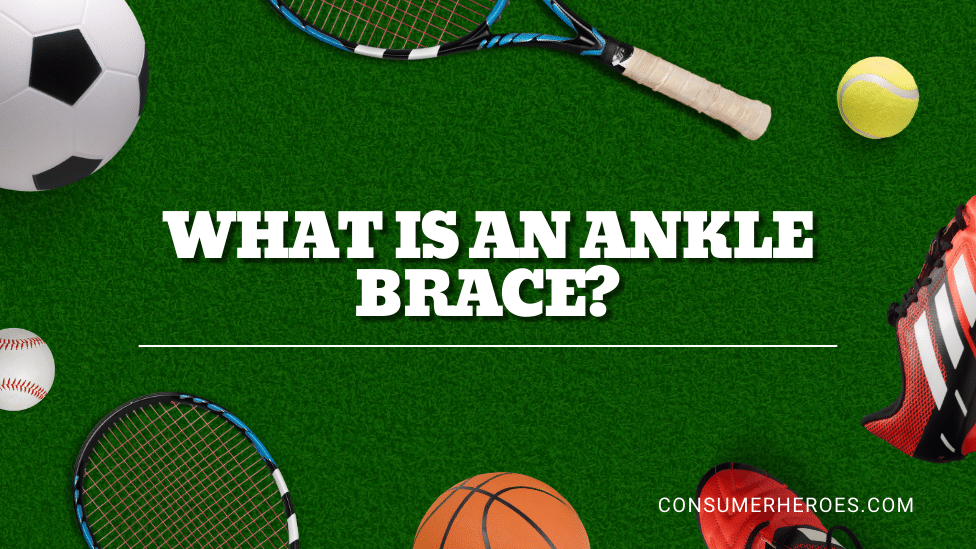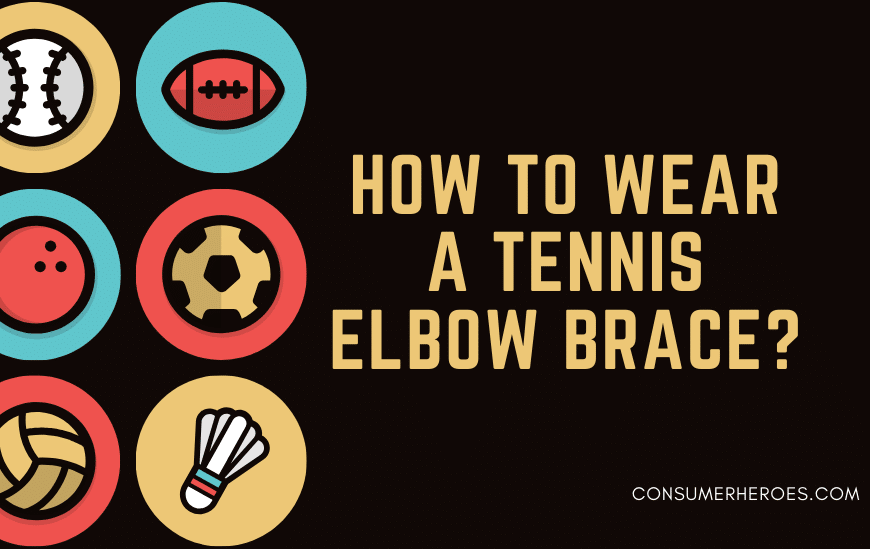An ankle brace is a medical device that provides support and protection to the ankle joint. It is typically made of a combination of materials such as nylon, neoprene, and elastic, and comes in various sizes and designs to fit different ankle shapes and sizes. Some ankle braces are designed to be worn during physical activity, while others are meant to be worn for extended periods of time to aid in recovery from an injury.
Ankle braces are commonly used in sports such as basketball, soccer, and volleyball to provide additional support to the ankle joint and prevent injuries such as sprains and strains. They can also be used by individuals with chronic ankle instability or those recovering from ankle injuries to aid in the healing process and prevent further damage. Ankle braces can be purchased over-the-counter or prescribed by a medical professional depending on the severity of the injury and the individual’s needs.
What is an Ankle Brace?
An ankle brace is a device worn around the ankle to provide support, stability, and protection to the ankle joint. It is commonly used by athletes, individuals with ankle injuries, and those with chronic ankle instability.
Ankle braces come in various styles, designs, and materials, but they all serve the same purpose of preventing excessive movement of the ankle joint and reducing the risk of injury. Some ankle braces are designed to be worn during physical activity, while others are intended for daily use.
Ankle braces can be classified into two main categories: rigid and flexible. Rigid ankle braces are made of hard plastic or metal and provide maximum support and stability to the ankle joint. These types of braces are typically used for severe ankle injuries or after surgery.
Flexible ankle braces, on the other hand, are made of soft materials such as neoprene or elastic and provide moderate support and compression to the ankle joint. These types of braces are commonly used for mild to moderate ankle injuries or for individuals with chronic ankle instability.
Ankle braces can also be categorized based on their design, such as lace-up, strap-on, or slip-on. Lace-up ankle braces provide a customizable fit and are ideal for individuals with narrow or wide feet. Strap-on ankle braces are easy to put on and take off and provide targeted compression to specific areas of the ankle. Slip-on ankle braces are the most convenient to use and are ideal for individuals who want a quick and easy solution for ankle support.
Overall, ankle braces are an effective way to prevent ankle injuries, provide support and stability to the ankle joint, and promote healing and recovery for individuals with ankle injuries.
Types of Ankle Braces
There are various types of ankle braces available in the market, each designed to provide different levels of support and protection to the ankle. Here are three common types of ankle braces:
Rigid Ankle Braces
Rigid ankle braces are made of hard plastic or metal and are designed to restrict ankle movement. They are mostly used for severe ankle injuries or after ankle surgery. These braces provide maximum support and stability to the ankle joint by limiting the range of motion. They are usually worn for a short period and are not recommended for long-term use.
Lace-Up Ankle Braces
Lace-up ankle braces are made of soft and flexible material and are designed to fit snugly around the ankle. They provide moderate support and stability to the ankle joint and are suitable for mild to moderate ankle injuries. These braces can be adjusted for a comfortable fit and are easy to wear under shoes. They are also available in different sizes and styles to suit individual needs.
Compression Ankle Braces
Compression ankle braces are made of elastic material and are designed to provide compression and support to the ankle joint. They are suitable for mild ankle injuries and can also be used to prevent ankle injuries during sports or other physical activities. These braces are lightweight and breathable, making them comfortable to wear for long periods. They are also available in different sizes and styles to suit individual needs.
In summary, ankle braces are available in different types to cater to different levels of ankle support and protection. It is essential to choose the right type of ankle brace based on the severity of the injury and individual needs.
Purpose of Ankle Braces
Ankle braces are a type of orthopedic device that is worn around the ankle to provide support and protection. They are commonly used by athletes, people with chronic ankle instability, and those recovering from ankle injuries. Ankle braces come in different shapes and sizes, and are made from a variety of materials, including neoprene, elastic, and rigid plastic.
Injury Prevention
One of the primary purposes of ankle braces is to prevent ankle injuries. Ankle braces work by providing additional support to the ankle joint, which can help prevent the ankle from rolling or twisting during physical activity. This is especially important for athletes who participate in sports that involve a lot of running, jumping, and cutting movements, as these types of activities put a lot of stress on the ankle joint.
Post-Injury Support
Ankle braces can also be used to provide support and stability to the ankle joint after an injury has occurred. This can help reduce pain and swelling, and can also help prevent further injury. Ankle braces are commonly used by people who have sprained their ankle, as well as those who have suffered more serious ankle injuries, such as a fracture or dislocation.
Pain Relief
In addition to providing support and protection, ankle braces can also be used to help alleviate pain and discomfort associated with ankle injuries. Ankle braces can help reduce inflammation and swelling, which can help reduce pain and improve mobility. Ankle braces can also help relieve pressure on the ankle joint, which can help reduce pain and discomfort during physical activity.
Overall, ankle braces are a versatile and effective tool for preventing and treating ankle injuries. Whether you are an athlete looking to prevent injuries, or someone recovering from an ankle injury, an ankle brace can provide the support and protection you need to stay active and healthy.
How to Choose an Ankle Brace
When choosing an ankle brace, it is important to consider a few factors to ensure that you get the right one for your needs. Here are some things to keep in mind:
Size and Fit
One of the most important factors to consider when choosing an ankle brace is the size and fit. An ankle brace that is too small will not provide adequate support, while one that is too large may not stay in place and could even cause discomfort.
To ensure a proper fit, it is important to measure the circumference of your ankle and consult the manufacturer’s sizing chart. Some ankle braces may also have adjustable straps or laces to provide a more customized fit.
Material
The material of the ankle brace can also make a difference in its effectiveness and comfort. Some ankle braces are made of neoprene, which is a stretchy, breathable material that provides compression and support. Other ankle braces may be made of nylon or other synthetic materials that are lightweight and durable.
It is also important to consider any allergies you may have to certain materials, as well as the climate and conditions in which you will be wearing the ankle brace.
Type of Support Needed
The type of support needed will depend on the severity of your injury or the level of support you require. Some ankle braces provide basic support for everyday activities, while others may be designed for more intense physical activity or to help with specific injuries such as sprains or strains.
There are three main types of ankle braces: sleeve braces, lace-up braces, and rigid braces. Sleeve braces are typically made of neoprene and provide compression and mild support. Lace-up braces have adjustable laces that allow for a more customized fit and increased support. Rigid braces are typically made of plastic or other hard materials and provide the most support, but may be less comfortable and restrict movement.
By considering these factors and consulting with a medical professional if necessary, you can choose an ankle brace that will provide the right level of support and comfort for your needs.
Proper Use of Ankle Braces
How to Wear
When wearing an ankle brace, it is important to make sure it is fitted properly. The brace should be snug but not too tight, and it should not restrict movement or circulation. To put on the brace, follow these steps:
- Remove any shoes or socks.
- Open the brace and place it on the foot with the heel in the back and the tongue in the front.
- Secure the brace with the straps or laces, making sure they are not too tight or too loose.
- Adjust the brace as needed to ensure comfort and proper support.
When to Wear
Ankle braces are commonly worn during physical activity to provide support and prevent injury. They can also be worn during recovery from an ankle injury to aid in healing. It is important to consult with a healthcare professional to determine the appropriate use of an ankle brace for individual needs.
Maintenance and Care
Proper maintenance and care of an ankle brace can help prolong its lifespan and effectiveness. Here are some tips for maintaining and caring for an ankle brace:
- Clean the brace regularly with mild soap and water.
- Allow the brace to air dry completely before using it again.
- Do not machine wash or dry the brace.
- Inspect the brace regularly for signs of wear or damage, and replace it as needed.
- Store the brace in a cool, dry place away from direct sunlight.
Remember that an ankle brace is not a substitute for proper medical care or treatment. If you experience pain or discomfort while wearing an ankle brace, consult with a healthcare professional.
Potential Risks and Considerations
Ankle braces can be a helpful tool in preventing and treating ankle injuries, but they also come with potential risks and considerations that should be taken into account.
Overdependence
One potential risk of using an ankle brace is overdependence. If an individual relies too heavily on the brace, they may not develop the strength and stability needed to support their ankle on their own. This can lead to weaker muscles and ligaments, making the ankle more susceptible to injury in the future.
Incorrect Usage
Another consideration when using an ankle brace is ensuring that it is being used correctly. If the brace is not fitted properly or is not being worn according to the manufacturer’s instructions, it may not provide the intended level of support and could even exacerbate an existing injury.
Skin Irritation
Ankle braces can also cause skin irritation, particularly if they are worn for long periods of time or if an individual has sensitive skin. It is important to keep the brace clean and dry, and to take breaks from wearing it if irritation occurs.
Overall, ankle braces can be a useful tool in preventing and treating ankle injuries, but it is important to be aware of the potential risks and considerations associated with their use. By using the brace properly and in conjunction with other injury prevention measures, individuals can help protect their ankles and reduce the risk of injury.







